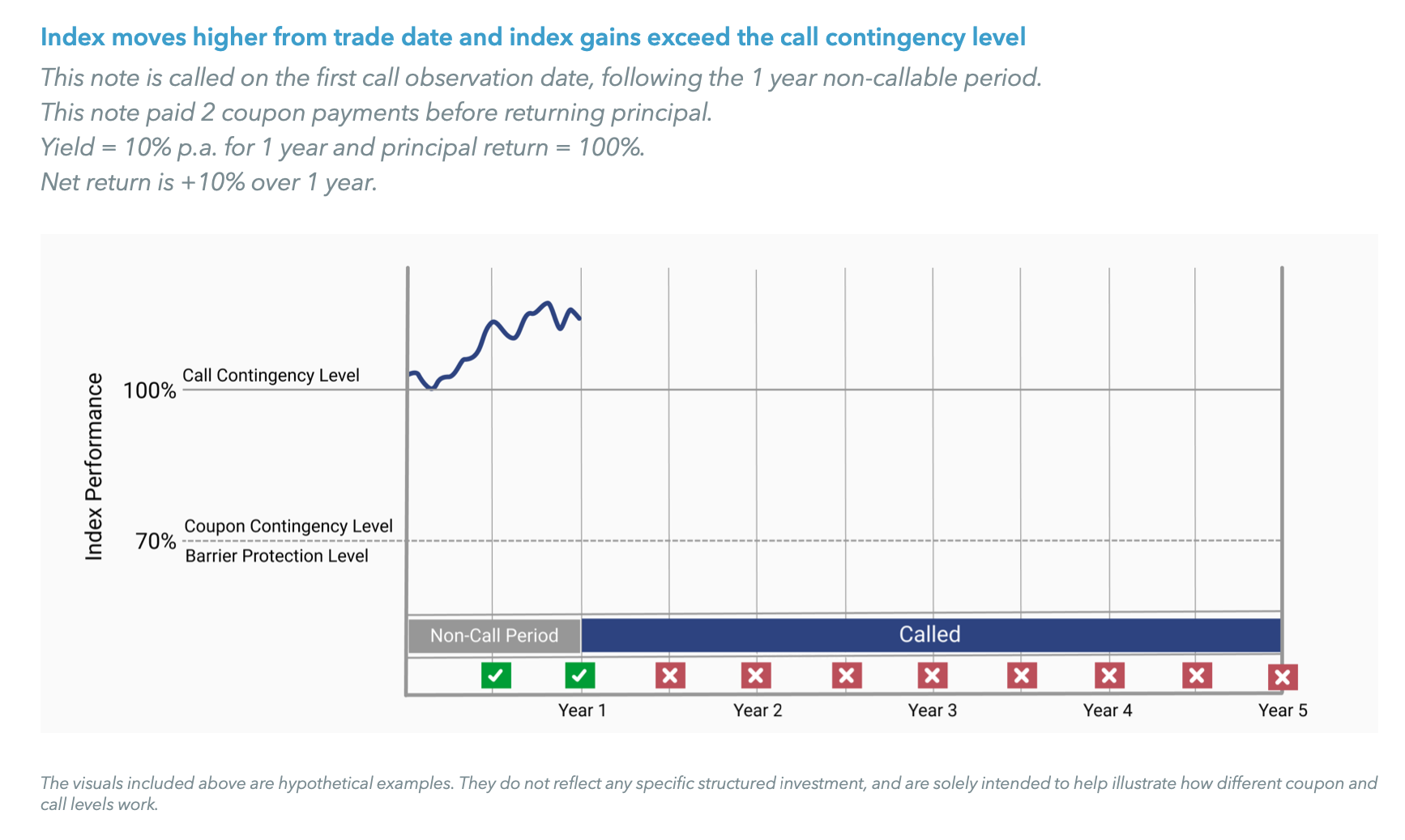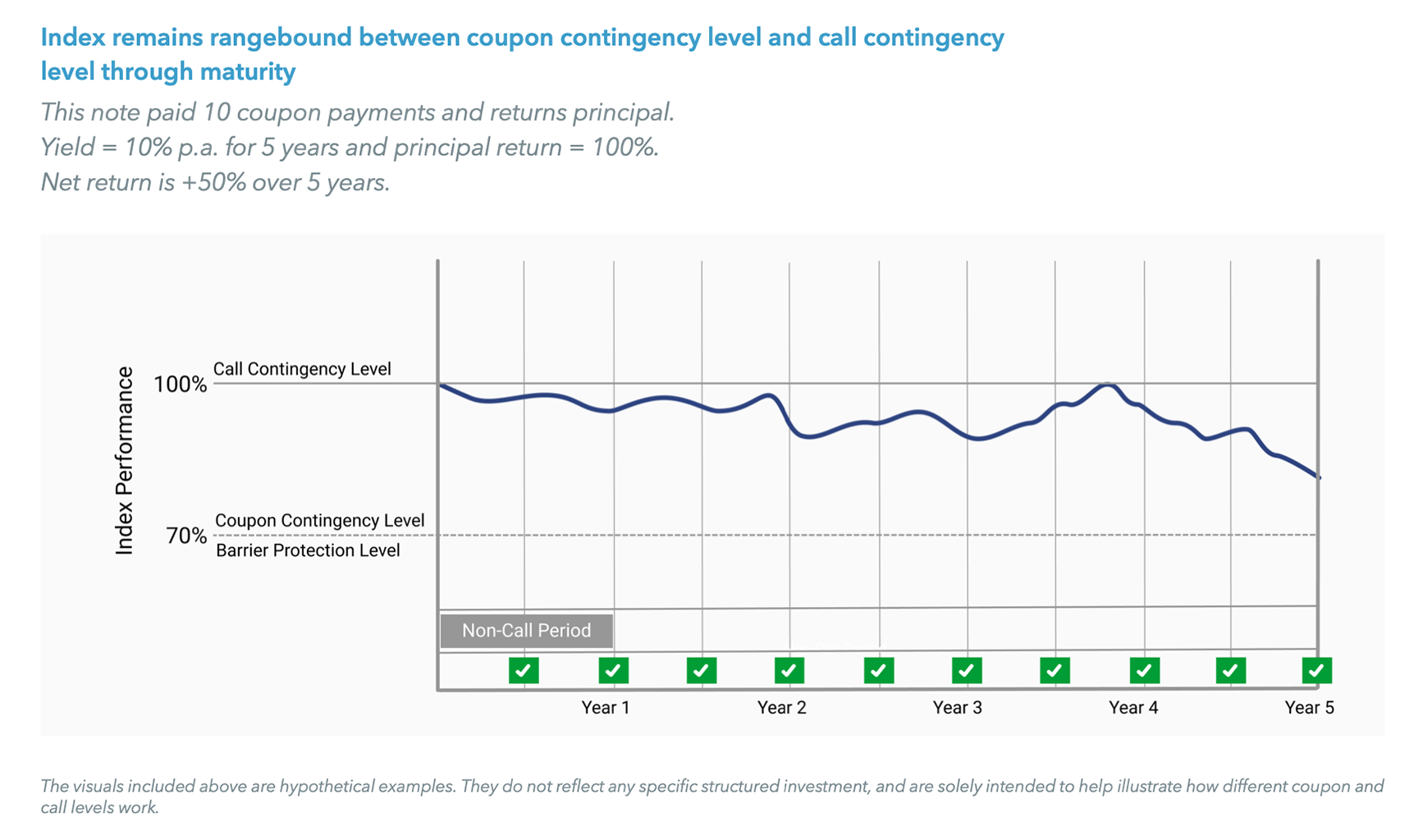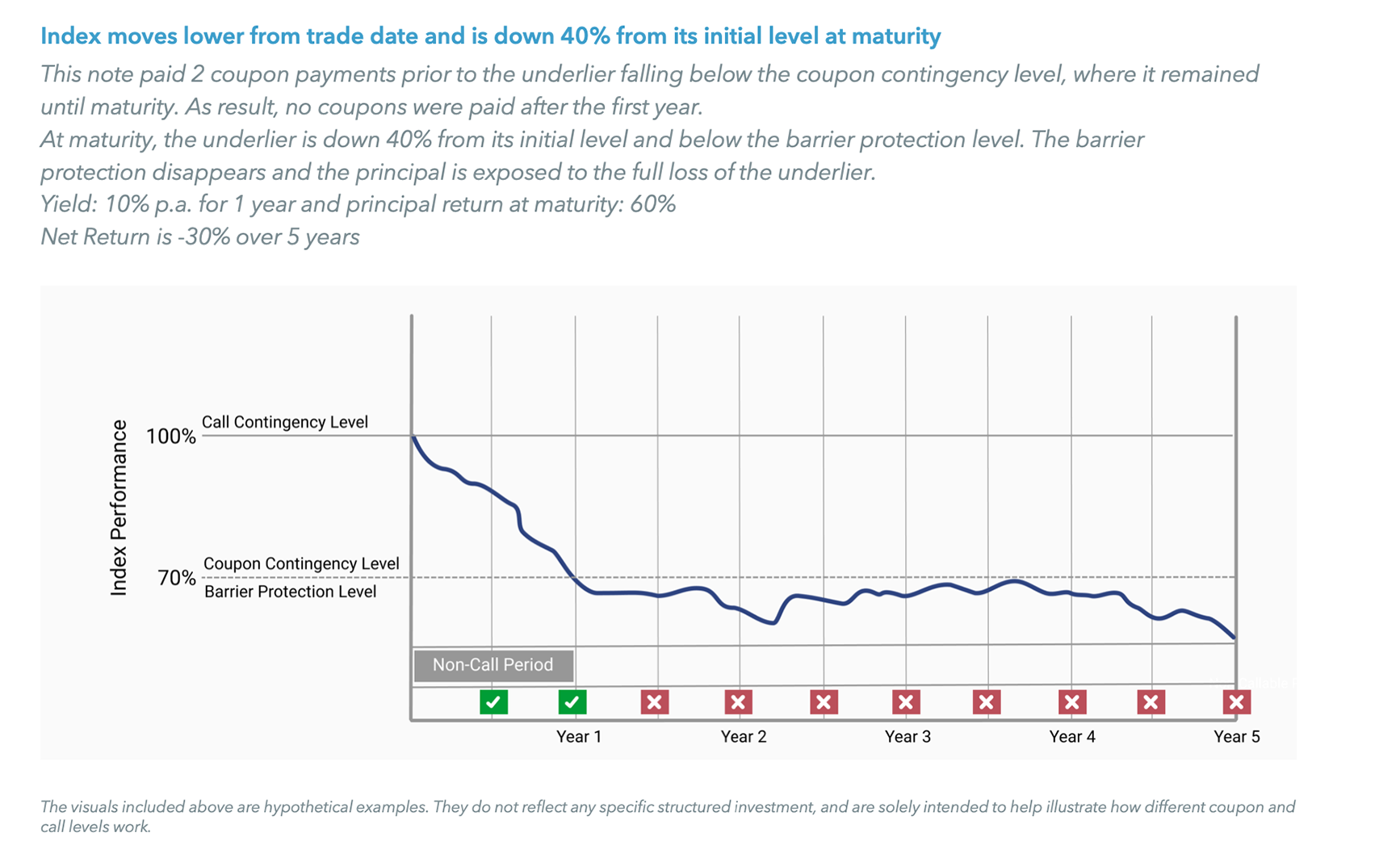Callable market linked income notes are a type of structured investment linked to the performance of an underlier such as an equity index, stock, or other reference asset. They are designed to offer higher income potential than traditional debt instruments.
How Do Callable Market Linked Income Notes Provide Income?
These notes can provide income, paid monthly, quarterly, semi-annually, or annually, as long as the underlier remains at or above a certain threshold, which is called the coupon contingency level. If the underlier falls below the coupon contingency level on any of the observation dates, the periodic payments stop until the underlier rises above the threshold on a future observation date.
Callable market linked income notes can include one of two call features. In the example below, we look at a callable market linked income note that could be redeemed early based on the performance of the underlier. This type of call feature is called autocall because the note is automatically redeemed if the underlier is at or above a certain level on observation dates, as specified in the offering document.
Let’s consider a note with the following terms:

This note pays a semiannual coupon of 10% per annum as long as SPX is at or above 70% of its initial level on the semiannual observation dates. Because it has an autocall feature, the note will be automatically redeemed early for par if SPX is at or above 100% of its initial level on any call observation date, noting that call observation dates take place semiannually starting one year after the trade date (the non-call period). This note also has protection in the form of a 30% barrier. This means the holder is not exposed to principal losses if the underlier is at or above the barrier protection level, which is 70% of its initial level, at the end of the term. However, if the underlier is down more than 30%, the protection disappears entirely, and losses are one-to-one from SPX’s initial level.
What is the Payoff Under Different Hypothetical Market Outcomes?
Let’s look at three examples of hypothetical market scenarios to understand how the above callable market linked income note would behave in each. These are not representative of actual market scenarios, nor do they represent all possible market scenarios.



When to Consider Callable Market Linked Income Notes
For investors looking to build more income potential into their portfolio, callable market linked income notes may be a welcome consideration. While such notes offer the possibility for higher yield in the form of contingent coupons, they also carry a greater degree of risk that must be weighed, including full exposure of principal to losses, issuer credit risk, and liquidity risk. Take note of the following key benefits and considerations:
Benefits
- Income Potential: Callable market linked income notes can deliver higher income potential than certain other income producing investments, like corporate bonds or treasuries. This income is subject to certain contingencies and is not guaranteed.
- Downside Protection: Callable market linked income notes offer more protection than a direct investment in the underlier itself, although less protection than traditional debt instruments.
Considerations
- Contingent Income: Callable market linked income notes can stop paying income or be called based on the performance of the underlier. It is possible that zero coupons are received during the life of the investment.
- Downside Exposure: Unlike corporate bonds or treasuries, callable market linked income notes expose principal to risk of loss based on the performance of the underlier.
- Credit Risk: Investors who hold callable market linked income notes are exposed to the credit risk of the issuer and must be comfortable with the issuer’s creditworthiness for the life of the investment.
- Liquidity and Statement Value: Callable market linked income notes are buy-and-hold investments, which means that investors must be comfortable holding the note until maturity in order to receive any return of principal. There is no guaranteed secondary market. Issuing firms may offer to buy back a structured investment before maturity, typically at a discount to statement value, however they are under no legal obligation to do so.
- Call Feature: Callable market linked income notes can be called before maturity based on the performance of the underlier, as specified in the offering document. It is possible the trade does not last for the full length of the stated term. This introduces reinvestment risk to the extent a trade is called early and similar re- investment alternatives are not available.
Investments frequently utilized to generate yield include preferred stock, corporate bonds, stocks with high dividend yields, and municipal bonds. Each type of investment offers a different risk-reward profile. When investors consider which type of investment is best for their given circumstances, it’s important to ask the following:
Does the investment vehicle deliver adequate potential reward for its associated risk?
The nature of this question is situation-specific and must take into account an investor’s investment objectives, risk tolerance, and additional factors. To the extent the answer is no for current holdings, an investor may consider the alternative risk-reward profile offered by callable market linked income notes.
Securities products and services may be offered through iCapital Markets, LLC a registered broker/dealer, member FINRA and SIPC, and an affiliate of Institutional Capital Network, Inc. (“iCapital”). Please see the disclaimer at the end of this document for more information.
Related: Understanding Private Market Fund Distribution Waterfalls

